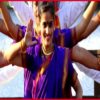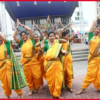Introduction
India, a land of immense cultural heritage, is home to a myriad of traditional art forms that reflect its rich history, diverse communities, and deep-rooted values. Among these, folk dances play a vital role in preserving the traditions and cultural identity of different regions. Passed down through generations, these dance forms serve as a medium to tell stories, celebrate festivals, and honor deities.
Folk dances are not merely a form of entertainment but also a means of maintaining social cohesion and transmitting cultural knowledge. They embody the essence of Indian traditions, showcasing the customs, rituals, and beliefs of the people. In this article, we explore the importance of folk dances in preserving Indian traditions, their regional diversity, and their role in modern society.
The Significance of Folk Dances in Indian Culture
1. A Reflection of Regional Identity
Each region in India has its own distinct folk dances that symbolize the traditions and customs of that particular area. These dances are deeply connected to local history, mythology, and social customs. For example:
Bhangra and Giddha (Punjab): Energetic and vibrant, these dances celebrate the harvest festival of Baisakhi.
Garba and Dandiya Raas (Gujarat): Performed during Navratri, these dances honor Goddess Durga.
Bihu (Assam): A lively dance associated with the Assamese New Year and agricultural celebrations.
Lavani (Maharashtra): A powerful and rhythmic dance form that narrates stories through music and expressions.
These regional dances help communities retain their unique identities and heritage, passing them on to future generations.
2. A Medium for Storytelling and Oral Traditions
Folk dances often incorporate elements of storytelling, depicting epics, historical events, and social themes through expressive movements and symbolic gestures. Many of these dance forms narrate tales from the Ramayana, Mahabharata, and Puranas, helping preserve these ancient texts in an engaging and accessible way.
For example, Yakshagana, a traditional dance-drama from Karnataka, enacts scenes from Hindu mythology with elaborate costumes and expressive storytelling. Similarly, Therukoothu, a street theater form in Tamil Nadu, brings folklore and religious stories to life, keeping oral traditions alive.
3. Strengthening Social and Cultural Bonds
Folk dances are performed during festivals, weddings, and community gatherings, fostering social unity and participation. They provide an opportunity for people of all ages to come together, strengthening communal ties.
For instance, during the Rath Yatra festival in Odisha, the dance form of Gotipua—a precursor to Odissi dance—is performed to celebrate the event, reinforcing spiritual devotion and cultural pride. Likewise, Raas Leela, associated with Lord Krishna, is performed in groups, symbolizing love, joy, and devotion.
Regional Diversity of Indian Folk Dances
1. North India
Bhangra (Punjab): A high-energy dance performed by men, originally associated with harvest celebrations.
Rouf (Jammu & Kashmir): A slow-paced group dance performed by women during Eid and other celebrations.
Chhau (Jharkhand, Odisha, West Bengal): A martial dance with elaborate masks and dynamic movements.
2. South India
Kolattam (Andhra Pradesh & Tamil Nadu): A traditional stick dance performed during religious festivals.
Theyam (Kerala): A ritualistic dance-drama that represents deities and mythical characters.
Yakshagana (Karnataka): A vibrant folk theater with music, dialogue, and intricate costumes.
3. East India
Bihu (Assam): A joyous dance performed by both men and women to celebrate the Assamese New Year.
Chhau (West Bengal, Odisha, Jharkhand): A warrior dance that blends tribal traditions with classical elements.
Jhumair (Jharkhand & Bihar): A rhythmic dance performed by the tribal communities during harvest festivals.
4. West India
Garba (Gujarat): A circular dance performed with graceful movements during Navratri.
Ghoomar (Rajasthan): A dance traditionally performed by Rajput women, showcasing elegant twirls.
Dandiya Raas (Gujarat): A lively dance using decorated sticks, performed as part of Navratri celebrations.
Folk Dances in Modern India
1. Revival and Preservation Efforts
With globalization and modernization, there is a risk of losing traditional folk dances. However, efforts are being made to preserve and promote these dance forms through cultural festivals, dance academies, and government initiatives. Organizations such as Sangeet Natak Akademi work to document and support folk artists.
2. Influence on Bollywood and Contemporary Dance
Folk dances have significantly influenced Bollywood choreography. Songs featuring Bhangra, Garba, Lavani, and Ghoomar bring traditional elements to mainstream cinema, introducing younger generations to their cultural heritage. Contemporary dancers also incorporate folk steps into fusion performances, keeping the tradition alive in a modern format.
3. Promotion on International Platforms
Indian folk dances have gained recognition worldwide through cultural exchange programs, dance festivals, and international performances. Many dance troupes represent India in global events, showcasing the richness and diversity of Indian traditions on a broader stage.
Conclusion
Folk dances are an integral part of India’s cultural heritage, serving as a bridge between the past and the present. They preserve regional identities, convey powerful stories, and unite communities in celebration. While modernization poses challenges, continued efforts in education, documentation, and promotion can ensure that these traditional art forms thrive for future generations.
India’s folk dances are more than just movements—they are expressions of history, faith, and life itself. As long as these vibrant traditions are performed and passed down, they will remain an essential part of India’s cultural fabric.




